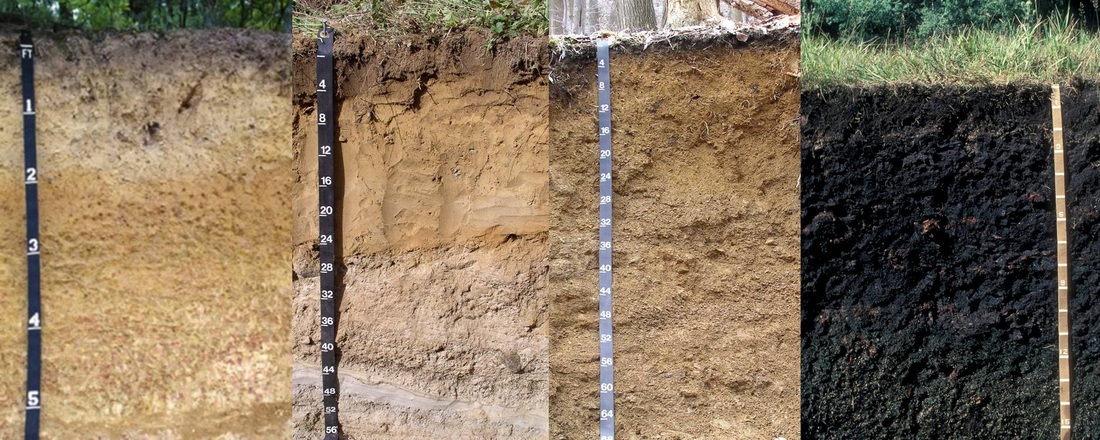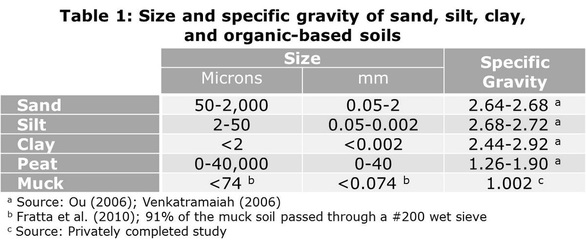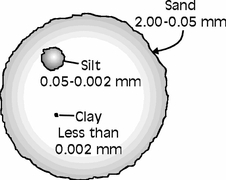
| Muck soils are comparatively similar to clay and silt particles in size, but have less than half the specific gravity of them (Table 1). The muck particles also don’t aggregate like mineral soils. Thus, even though individual particles of mineral soils can be quite small, the aggregation will create a larger mass. The lack of aggregation in muck soils combined with the low specific gravity means that muck is susceptible to being picked up by the wind and blown around, creating something that is similar to a sand storm. |
- Cornell University Cooperative Extension. (2008). Soil Organic Matter. In Agronomy Fact Sheet Series. Retrieved December 5, 2014, from http://franklin.cce.cornell.edu/resources/soil-organic-matter-fact-sheet
- Ou, C.-Y. (2006). Deep excavation: Theory and practice (p. 8). London, UK: CRC Press.
- Venkatramaiah, C. (2006). Geotechnical Engineering (3rd ed., p. 32). New Delhi, India: New Age International.
- Fratta, D. O., Puppala, A. J., & Muhunthan, B. (2010). GeoFlorida 2010: Advances in analysis, modeling & design (p. 2753). N.p.: ASCE Publications.


 RSS Feed
RSS Feed
